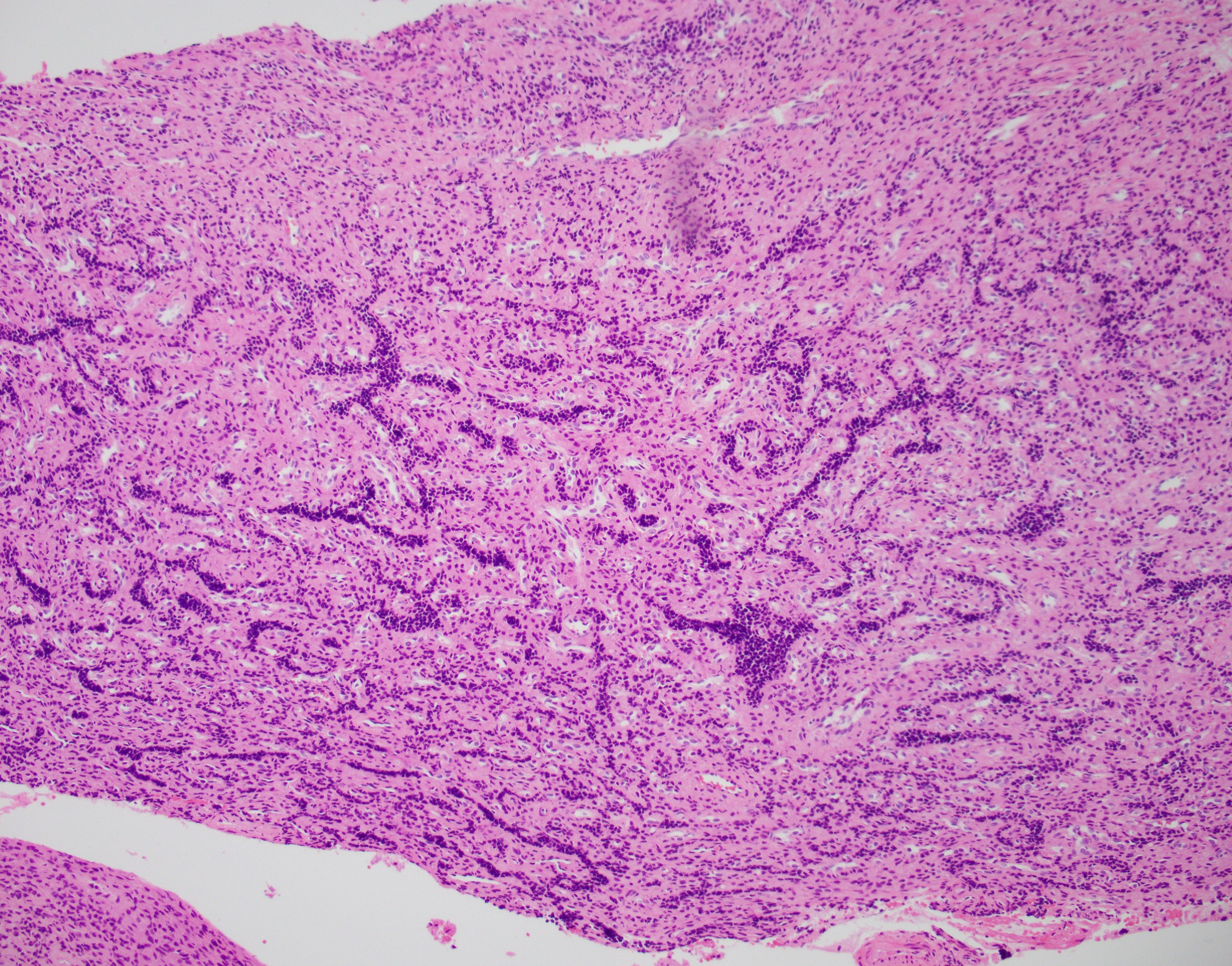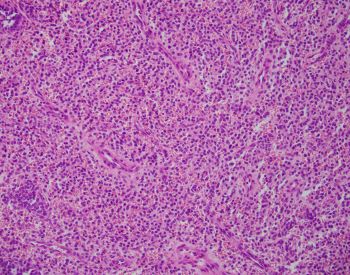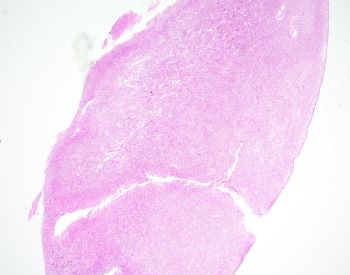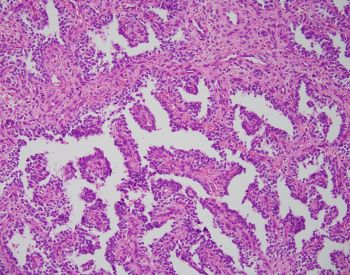Case History
39-year-old female, endometrial biopsy
What is the most likely diagnosis?
B. Endometrial stromal nodule with sex cord-like differentiation
C. Highly cellular leiomyoma
D. Endometrial polyp




Answer: B. Endometrial stromal nodule with sex cord-like differentiation
Sections show large polypoid, densely cellular fragments of endometrial stroma composed of bland cells that are small and uniform, resembling proliferative-type endometrial stroma. Admixed within this stroma are sex cord-like elements, arranged in cords, trabeculae, and retiform patterns. Endometrial stromal nodules are rare tumors. They can display a number of different histologic variants, including sex cord-like elements (as in this case), smooth muscle, endometrioid glandular elements, and myxoid/fibroblastic. A characteristic network of arterioles around which neoplastic cells often whorl is distinctive as well. A diagnosis of an endometrial stromal nodule can only be definitively made after ensuring there is no myometrial or lymphovascular invasion, and often this requires a resection rather than just a biopsy. This brings up an important differential: low-grade endometrial stromal sarcoma, as invasion renders the diagnosis of sarcoma. So, it is best to defer a definitive diagnosis to a resection specimen. Both nodules and sarcomas have similar histologic features, including sex cord-like elements. Both are also characterized by a t(7;17)(p15;q21) translocation resulting in JAZF1-SUZ12 fusion (there are others, but this is the most common).
Uterine tumor resembling ovarian sex cord tumor is also in consideration. However, the presence of endometrial stroma excludes this diagnosis. An endometrial polyp could come under the differential here as well, given the large polypoid fragments and larger, thick-walled blood vessels. The important diagnostic feature lacking in this case for a polyp are branched or cystically dilated endometrial glands within an altered, fibrotic stroma. The presence of sex cord-like elements really excludes the possibility of a cellular leiomyoma, but stromal tumors and uterine smooth muscle tumors (ie leiomyomas) can have overlap. Features favoring a cellular leiomyoma include prominent thick-walled blood vessels and cleft-like spaces.